PCGS vs NGC: The Ultimate Guide to Comparing Grades
Key Points Mint State Equivalence: Both NGC and PCGS use MS70 for a perfect Mint State coin, ensuring direct comparability. Proof Grade Difference: NGC uses PF70 for a perfect Proof coin, while PCGS uses PR70, but both denote identical quality....

Key Points
-
Mint State Equivalence: Both NGC and PCGS use MS70 for a perfect Mint State coin, ensuring direct comparability.
-
Proof Grade Difference: NGC uses PF70 for a perfect Proof coin, while PCGS uses PR70, but both denote identical quality.
-
Cameo Terminology: NGC’s Ultra Cameo and PCGS’s Deep Cameo describe the same bold contrast in Proof coins.
-
Release Labels: NGC’s Early Releases and PCGS’s First Strike both mark coins graded within 30 days of release; NGC’s Advance Releases is a rarer bulk designation.
-
Market Perception: Some collectors favor PCGS for perceived stricter grading, but both services are highly reputable.
Understanding Coin Grading

As the founder of Global Coin, I’ve guided countless collectors through the world of numismatics, and one question I hear often is how to compare coins graded by NGC (Numismatic Guaranty Corporation) and PCGS (Professional Coin Grading Service). Both are trusted leaders in coin grading, and their grading standards are widely accepted in the numismatic market, enhancing the credibility and value of graded coins.
Both companies provide grading and authentication as essential services, but their terminology can seem like a puzzle. Whether you’re eyeing a flawless MS70 Silver Eagle or a stunning PF70 Proof coin, understanding their grading systems is key to making informed decisions. This guide simplifies the comparison, focusing on top grades like MS70, PF70/PR70, and designations like Ultra Cameo vs. Deep Cameo and Early Releases vs. First Strike. Serious collectors rely on these distinctions to make informed decisions about their collections.
Mint State and Proof Grades
For Mint State coins, both NGC and PCGS use MS70 to signify a perfect coin with no flaws under 5x magnification. Coins with higher grades, such as MS70 or PF70/PR70, are generally more desirable and valuable to collectors and investors. For Proof coins, NGC uses PF70, while PCGS uses PR70, but both represent the same pristine quality, adhering to strict grading standards. Professional graders carefully examine each coin and determine the final grade based on these standards, ensuring consistency and accuracy. For example, a 2025 American Silver Eagle graded MS70 by either service is equally flawless, and a 2025 Proof Gold Eagle graded PF70 by NGC matches a PR70 from PCGS.
Cameo and Release Designations

NGC’s Ultra Cameo and PCGS’s Deep Cameo both describe Proof coins with striking contrast between mirrored fields and frosted devices, making them visually spectacular and helping them stand out to collectors. Similarly, NGC’s Early Releases and PCGS’s First Strike label coins graded within 30 days of release, adding collectible appeal for collectors and investors alike. NGC also offers Advance Releases for select bulk submissions purchased before the public sale date, a rarer designation without a direct PCGS equivalent.
Choosing Between NGC and PCGS
When helping clients choose the best option for their needs, it's important to consider the strengths of each grading service. While grades are equivalent, some collectors prefer PCGS for its perceived stricter standards, which may boost resale value slightly and allow PCGS coins to command a premium in certain markets. Others choose NGC for its global coin expertise or slab aesthetics. While more than one company exists, each has its own respected grading philosophy and standards that are widely recognized in the industry. At Global Coin, we work with both to ensure you get the best for your collection. Ultimately, the market or buyers decide the value of a coin based on the assigned grade. Both services are reliable, so your choice may hinge on personal preference, market trends for specific coins, or the perspective of investors.
The Ultimate Guide to Comparing NGC vs. PCGS Grades

As the founder of Global Coin, I’ve spent decades immersed in the world of coin collecting, helping enthusiasts build collections that spark joy and hold value. One of the most frequent questions I field is how to compare coins graded by NGC (Numismatic Guaranty Corporation) and PCGS (Professional Coin Grading Service), the two titans of third-party coin grading. Both companies have graded millions of coins over the years, demonstrating their extensive experience and authority in the industry. Both services are pillars of trust in numismatics, but their terminology—MS70, PF70, PR70, Ultra Cameo, Deep Cameo, Early Releases, First Strike—can feel like a maze. In this comprehensive guide, I’ll walk you through their grading systems, focusing on top grades and key designations, to help you confidently navigate your collecting journey. Whether you’re chasing a flawless 2025 American Silver Eagle or a rare Proof coin, understanding these nuances and the value considerations is essential.
Overview of NGC and PCGS
NGC and PCGS are the gold standards in coin grading, having shaped the industry since their founding in the 1980s. NGC, established in 1987 in Sarasota, Florida, has graded over 55 million coins and is the official grading service of the American Numismatic Association (NGC Overview). PCGS, founded in 1985 in Newport Beach, California, is renowned for its strict standards and has set benchmarks for coin authentication (PCGS History). Both services authenticate, grade, and encapsulate coins in tamper-evident slabs, ensuring protection and market credibility. Each coin is physically inspected in person by a qualified expert, with professional graders carefully examining surface flaws and imperfections to ensure accurate and unbiased grades. Both companies offer a guarantee of authenticity and accuracy for their graded coins, reinforcing their reliability and credibility for collectors and investors. Their grading systems rely on the Sheldon Scale, a 1–70 numerical system where 70 represents a perfect coin, providing a universal framework for collectors through standardized grading.
The Sheldon Scale: A Shared Foundation
Both NGC and PCGS use the Sheldon Scale, developed by Dr. William Sheldon in 1948, to assign grades based on a coin’s condition. A grade of 70 indicates a flawless coin with no post-production imperfections under 5x magnification, while lower grades reflect increasing wear or flaws. This shared standard ensures that numerical grades are directly comparable across both services, making it easier for collectors to evaluate coins regardless of who graded them.
Mint State Grades: MS70 Equivalence

Mint State coins, struck for circulation but never used, range from heavily worn (MS60) to perfect (MS70). Both NGC and PCGS use the MS designation, with MS70 signifying a coin free of any imperfections under 5x magnification. NGC defines MS70 as having no post-production flaws, while PCGS describes it as fully struck, lustrous, and free of visual marks, allowing minor “as minted” defects that don’t detract from eye appeal (NGC Grading Scale). For example, a 2025 American Silver Eagle graded MS70 by NGC is equivalent to one graded MS70 by PCGS, both representing the pinnacle of Mint State quality, especially among high-grade coins. The table below outlines key Mint State grades:
|
Grade |
NGC Designation |
PCGS Designation |
Description |
|---|---|---|---|
|
MS70 |
MS70 |
MS70 |
Flawless, no imperfections at 5x magnification |
|
MS69 |
MS69 |
MS69 |
Near flawless, minuscule imperfections |
|
MS68 |
MS68 |
MS68 |
Slight imperfections, minor strike weakness |
Proof Grades: PF70 vs. PR70

Proof coins, crafted for collectors with mirrored fields and frosted devices, have different designations:
-
NGC uses PF (Proof), with PF70 indicating a perfect Proof coin.
-
PCGS uses PR (Proof), with PR70 denoting the same flawless standard.
Both PF70 and PR70 require no imperfections under 5x magnification, ensuring equivalence (PCGS vs. NGC Comparison). For example, a 2025 Proof Gold Eagle graded PF70 by NGC is identical in quality to one graded PR70 by PCGS, representing the same coin in different designations. The difference in prefixes reflects branding choices: PCGS adopted PR in 1985, while NGC chose PF in 1987 to differentiate itself (PCGS vs. NGC). The table below compares Proof grades:
|
Grade |
NGC Designation |
PCGS Designation |
Description |
|---|---|---|---|
|
PF70/PR70 |
PF70 |
PR70 |
Flawless, no imperfections at 5x magnification |
|
PF69/PR69 |
PF69 |
PR69 |
Near flawless, minuscule imperfections |
|
PF68/PR68 |
PF68 |
PR68 |
Slight imperfections, minor strike weakness |
Additional Designations

NGC and PCGS offer designations to highlight special attributes, enhancing a coin’s collectible appeal. Both companies also grade coins with errors and varieties, which can significantly affect a coin's value and market premium. In addition to coins, NGC and PCGS provide grading and authentication services for tokens, expanding their expertise to various forms of collectible currency. Below, I compare the key designations you mentioned, along with their significance.
Ultra Cameo (NGC) vs. Deep Cameo (PCGS)
Proof coins with bold contrast between mirrored fields and frosted devices are highly prized. NGC uses Ultra Cameo to describe this effect, while PCGS uses Deep Cameo (often abbreviated as DCAM). Both terms are equivalent, indicating a coin with heavily frosted devices and deeply mirrored fields, creating a striking “black and white” appearance (Ultra Cameo vs. Deep Cameo). For example, a 1951 Franklin half dollar graded Proof 68 Ultra Cameo by NGC is comparable to one graded Proof 68 Deep Cameo by PCGS, both showcasing exceptional contrast. NGC notes that Ultra Cameo is synonymous with Deep Cameo, a standard term in the hobby (NGC Cameo Guide). These designations are reserved for the finest Proof coins, often commanding significant premiums, particularly for coins in secure holders .
Early Releases (NGC) vs. First Strike (PCGS)
Coins submitted for grading shortly after release often carry special designations. NGC awards Early Releases to coins received within 30 days of their first release, while PCGS grants First Strike to coins submitted within the first 30 days of issue. Both designations indicate the coin was among the first graded, adding pedigree appeal (First Strike vs. Early Releases). For instance, a 2025 American Eagle graded Early Releases by NGC is equivalent to one graded First Strike by PCGS, both signifying early submission. These labels are popular among collectors seeking coins with historical significance, as early-graded coins may reflect the mint’s best strikes.
Advance Releases (NGC)
NGC also offers a rarer designation called Advance Releases for select submitters who purchase bulk quantities of coins before the publicly posted first sale day. These coins must be received by NGC within one week of the ship date, making the designation exclusive and highly sought after (NGC Advance Releases FAQ). For example, a 2023 Morgan Silver Dollar graded PF70 Advance Releases by NGC reflects a coin acquired before public sale, adding to its rarity. PCGS does not have a direct equivalent, as First Strike covers their early submission category. Advance Releases are particularly appealing to advanced collectors chasing unique pedigrees.
The table below summarizes these designations:
|
Designation |
NGC Term |
PCGS Term |
Description |
|---|---|---|---|
|
Cameo Contrast |
Ultra Cameo |
Deep Cameo |
Bold contrast between mirrored fields and frosted devices |
|
Early Submission |
Early Releases |
First Strike |
Graded within 30 days of release |
|
Pre-Sale Bulk |
Advance Releases |
None |
Bulk coins purchased before public sale, graded within 1 week of ship date |
Other Notable Designations
While you specifically asked about the above designations, both services offer others that collectors may encounter:
-
NGC:
-
Star (*): For coins with exceptional eye appeal.
-
Plus (+): For coins at the high end of their grade (e.g., MS68+).
-
-
PCGS:
-
Plus (+): For coins in the top 30% of their grade (e.g., PR68+).
-
Deep Mirror Prooflike (DMPL): For Morgan dollars with mirrored fields.
-
These designations are not directly comparable but enhance a coin’s appeal without altering the numerical grade.
Conservation and Encapsulation Services

Conservation and encapsulation are essential components of modern coin collecting, providing collectors and investors with the security, authenticity, and long-term value preservation that the coin market demands. As leading professional coin grading services, both NGC and PCGS offer specialized conservation and encapsulation services designed to protect coins from environmental damage, improper handling, and the passage of time.
Conservation is the expert process of preserving a coin’s original condition by carefully removing contaminants and stabilizing its surfaces, all without altering the coin’s fundamental characteristics. This service is especially crucial for high-grade coins and rare pieces, where even minor residues or environmental factors can significantly impact a coin’s grade and market value. By leveraging the expertise of trained specialists, NGC and PCGS ensure that coins retain their eye appeal and integrity, which is vital for both collectors and investors seeking to maximize the value of their collections.
Encapsulation refers to the secure sealing of a graded coin within a tamper-evident, transparent holder. This holder, often called a “slab,” is engineered from durable, scratch-resistant plastic and is designed to protect the coin from physical damage, environmental exposure, and unauthorized handling. Each encapsulated coin is clearly labeled with its grade, authentication details, and a unique certification number, making it easy for buyers and sellers to identify and verify the coin’s authenticity and grade at a glance. This process not only safeguards the coin but also instills confidence in the standardized grading provided by the grading company.
The use of the Sheldon Scale and strict grading standards by both NGC and PCGS ensures that coins are evaluated and preserved consistently, providing transparency and trust in the coin grading process. Encapsulation also supports the registry programs offered by both services, allowing collectors to build competitive sets and track their collections with confidence.
Beyond conservation and encapsulation, these grading services offer a suite of additional tools—such as authentication, detailed grading reports, and registry set participation—that further enhance the collecting experience. For example, a rare world coin or a high-grade U.S. commemorative, once conserved and encapsulated by NGC or PCGS, not only benefits from expert preservation but also gains instant recognition and liquidity in the coin market.
While the cost of conservation and encapsulation varies depending on the coin’s value, rarity, and the level of service required, it is generally a small investment compared to the potential increase in value and security these services provide. For instance, grading and encapsulating a valuable coin might cost a few hundred dollars, yet the resulting increase in market appeal and buyer confidence can translate into thousands of dollars in added value.
In summary, conservation and encapsulation services offered by NGC and PCGS are crucial for anyone serious about coin collecting or investing. These services ensure that coins are properly preserved, authenticated, and protected, maintaining their value and appeal for generations. By entrusting your coins to reputable grading services, you benefit from industry-leading expertise, standardized grading, and the peace of mind that comes with knowing your collection is secure and market-ready.
Market Perception and Nuances

While grades and designations are technically equivalent, market perceptions can vary, which is crucial for buyers. Having a coin graded by a reputable service makes it easier to sell, as buyers trust the standardized grade and are more confident in the coin's value. Some collectors believe PCGS is stricter, potentially leading to higher resale values for PCGS-graded coins, especially in U.S. series, where PCGS coins may command 5–15% premiums (Market Analysis). Others prefer NGC for its expertise in world coins or its slab aesthetics. These perceptions are anecdotal, and both services employ expert numismatists. I’ve seen coins resubmitted to either service yield similar or slightly different grades, reflecting the subjective nature of grading. At Global Coin, we advise checking recent sales on platforms like eBay to gauge market preferences for your coin type.
Practical Tips for Collectors

When buying or selling graded coins:
-
Focus on Numerical Grade: MS70, PF70, and PR70 are equivalent across NGC and PCGS.
-
Verify Authenticity: Ensure coins are in tamper-evident slabs with certificates.
-
Research Market Trends: Compare prices for NGC vs. PCGS coins of the same type.
-
Consider Designations: Ultra Cameo/Deep Cameo or Early Releases/First Strike can boost value.
-
Choose Based on Preference: Select the service that aligns with your collection’s focus or aesthetic.
-
Evaluate Costs: Consider all costs involved in grading, including membership fees, per-coin grading fees, shipping, and insurance. You will need to pay these expenses when submitting coins.
-
Assess Value for Money: Think about whether the money you spend on grading is justified by the coin’s potential value. Cost is a key factor in deciding if grading is worthwhile.
For example, a 2025 Burnished Gold Eagle graded MS70 Early Releases by NGC or MS70 First Strike by PCGS will have the same quality, but market demand for PCGS slabs might slightly elevate its price.
Historical Context
PCGS, founded in 1985, pioneered third-party grading with encapsulated slabs, setting a high bar for consistency (PCGS vs. NGC). NGC, established in 1987, quickly became a rival, gaining endorsements from major numismatic organizations (NGC History). Their choice of PF (NGC) vs. PR (PCGS) and other designations reflects efforts to carve distinct identities while maintaining comparable standards.
Conclusion
NGC and PCGS are both exceptional grading services, and their grades—MS70, PF70, PR70—are directly comparable thanks to the Sheldon Scale. Designations like Ultra Cameo and Deep Cameo or Early Releases and First Strike are equivalent, with NGC’s Advance Releases adding a unique twist for bulk submissions. While market perceptions may favor one service over the other for certain coins, both are trusted pillars of numismatics. At Global Coin, we partner with NGC and PCGS to offer collectors the finest graded coins, ensuring your collection shines. Whether you’re building a set or investing, understanding these grading nuances empowers you to make confident choices.
Related Articles

How to Spot a Counterfeit Proof Coin in the Market
How to Spot a Counterfeit Proof Coin in the Market In the world of numismatics, few things hold ...
Discover More
BREAKING NUMISMATIC NEWS: Large batch of 2025 Marine Privy Coins MELTED by U.S. Mint
BREAKING NUMISMATIC NEWS: Large batch of 2025 Marine Privy Coins MELTED by U.S. Mint A historic ...
Discover More
Tax Implications When You Sell Gold Bullion in Different States
Disclaimer: The following content is for informational purposes only and should not be construed ...
Discover More

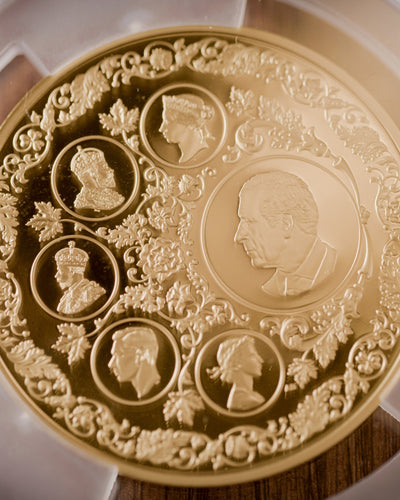
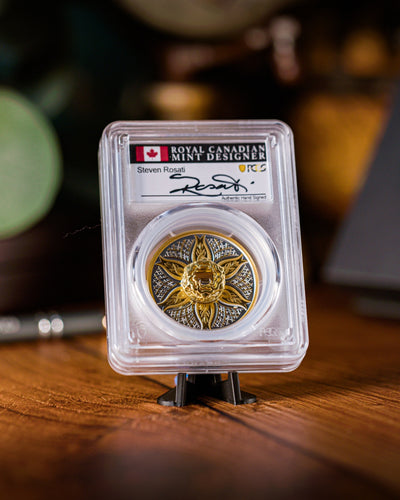
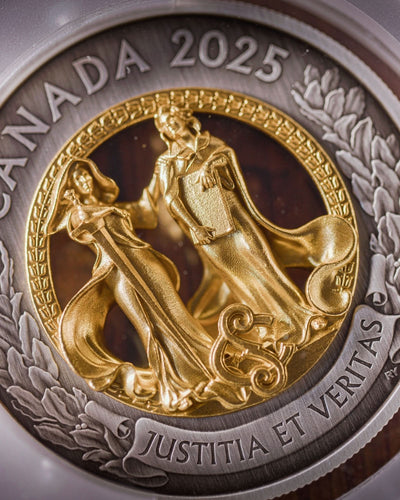
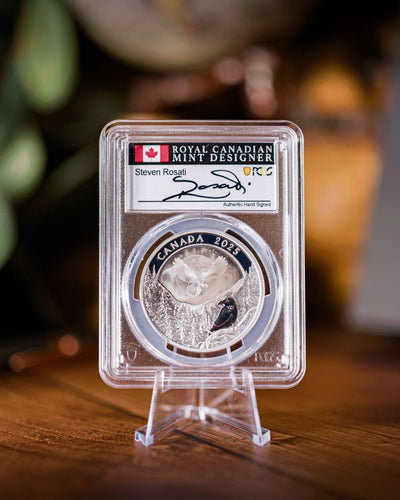
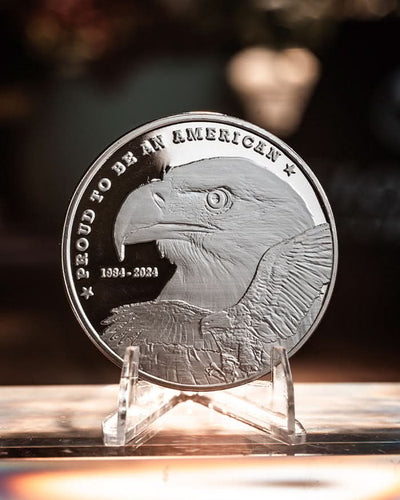
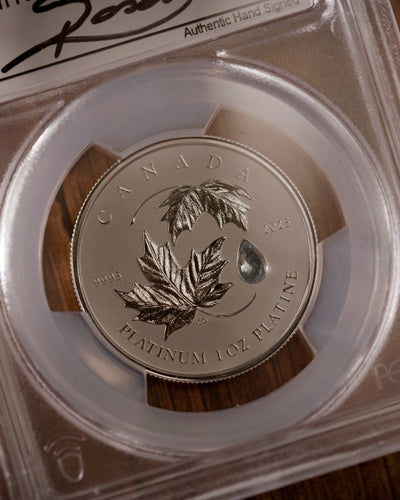

1 comment
I want to learn about coin collections
Mark Menicucci
Leave a comment
This site is protected by hCaptcha and the hCaptcha Privacy Policy and Terms of Service apply.